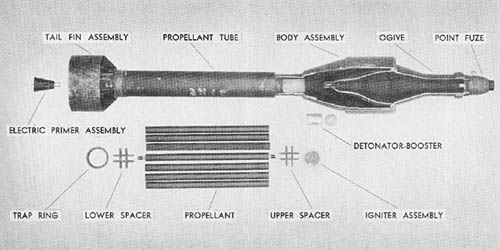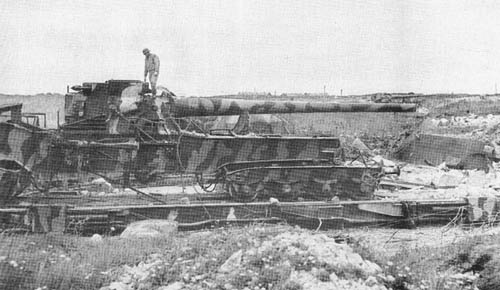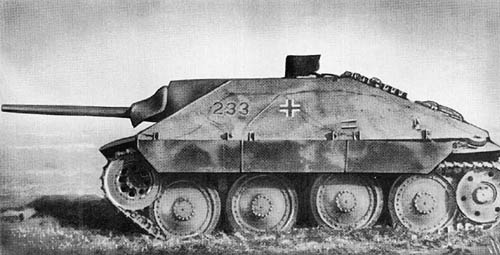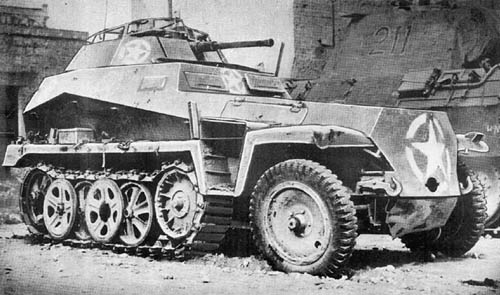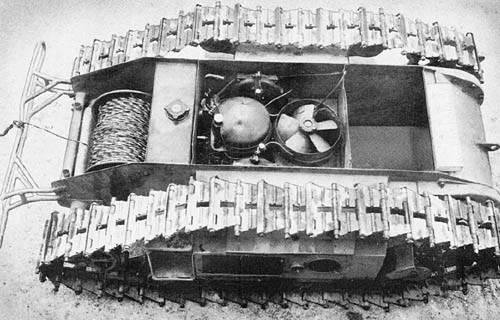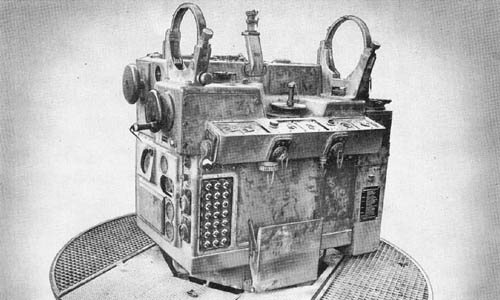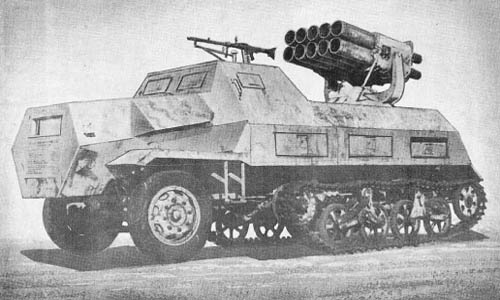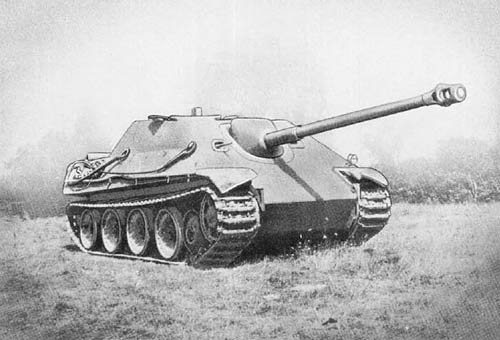
The standard Model A Panther chassis is used for building this vehicle. The vehicle embodies all of the engineering principles and methods of design accumulated by the Germans up to the time of its production, and is quite effective as an antitank or assault weapon.
The hull and fighting compartment are of all welded construction. The fighting compartment is 45 inches in height at the front and 57 inches at the rear. The length of the roof is 93 inches and the width 72 inches.
The steering mechanism, “one radius steering,” is new. It is unnecessary to engage the transmission in order to turn or traverse the tank through 360 degrees. The use of either steering lever will traverse the tank in a small radius or on the spot. The annulus gear of each of the two epicyclics is driven by the transmission output shaft and is subject to seven speeds forward and one reverse. The sun gears are held stationary on the straightaway by steering brakes. In making a turn, the inside sun gear is released to rotate backward for a sharper turn, the inside sun gear is driven by engagement through a steering clutch with the engine.
The vehicle is armed with the 8.8 cm Pak 43/3 gun in a massive cast steel mantlet which is flexibly mounted in a cast steel ring welded to the front plate. Traverse is 11 degrees. Stowage is provided for 29 rounds of each of two types of ammunition. One M.G. 34 is ball mounted in the front plate to the right. Driver’s vision is by periscope. Fuel capacity is 193 gallons, of which 34 gallons are held in auxiliary.
SPECIFICATIONS
| Weight | 45 tons | |
| Length (overall) Including gun | 28 ft., 4 ins. | |
| Excluding gun | 22 ft., 8 ins. | |
| Width (overall) | 10 ft., 10 ins. | |
| Height (overall) | 9 ft., 10 ins. | |
| Ground clearance | 21 ins. | |
| Tread centers | 8 ft., 7½ ins. | |
| Ground contact | 12 ft., 9½ ins. | |
| Width of track | 26 ins. | |
| Pitch of track | 6 ins. | |
| Track links | 67 | |
| Fording depth | 67 ins. | |
| Theoretical radius of action | ||
| Roads | 124 miles | |
| Cross-country | 62 miles | |
| Speed | ||
| Roads | 34 m.p.h. | |
| Cross-country | 15-18 m.p.h. | |
| Armor | ||
| Front plate | 80 mm at 55° to the vertical | |
| Sides | 45 mm at 30° to the vertical | |
| Rear | 40 mm at 30° to the vertical | |
| Top | 17 mm at 85° to the vertical | |
| Armament | 8.8 cm Pak 43/3 (MV 3.280 f/s, A.P.C.B.C.), M.G. 34 | |
| Ammunition (Rds.) | 58 (8.8 cm) | |
| Engine | Maybach HL 230 P 30 V12 gasoline | |
| Transmission | Synchromesh 7 speeds forward, 1 reverse | |
| Steering | One radius double drive epicyclic | |
| Crew | 5 |
German: p. 38.1 (August 1, 1945)
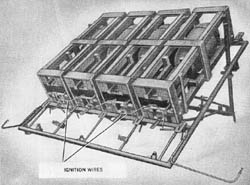 These two rocket projectors, or ramps, differ from each other only in construction details and in the material used. The Schweres Wurfgerät 40 is made of wood and weighs 115 pounds; the 41 model is of metal, weighing 243 pounds. Each is designed to carry four crates of the
These two rocket projectors, or ramps, differ from each other only in construction details and in the material used. The Schweres Wurfgerät 40 is made of wood and weighs 115 pounds; the 41 model is of metal, weighing 243 pounds. Each is designed to carry four crates of the 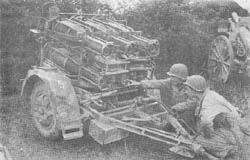 This rocket projector fires the
This rocket projector fires the 